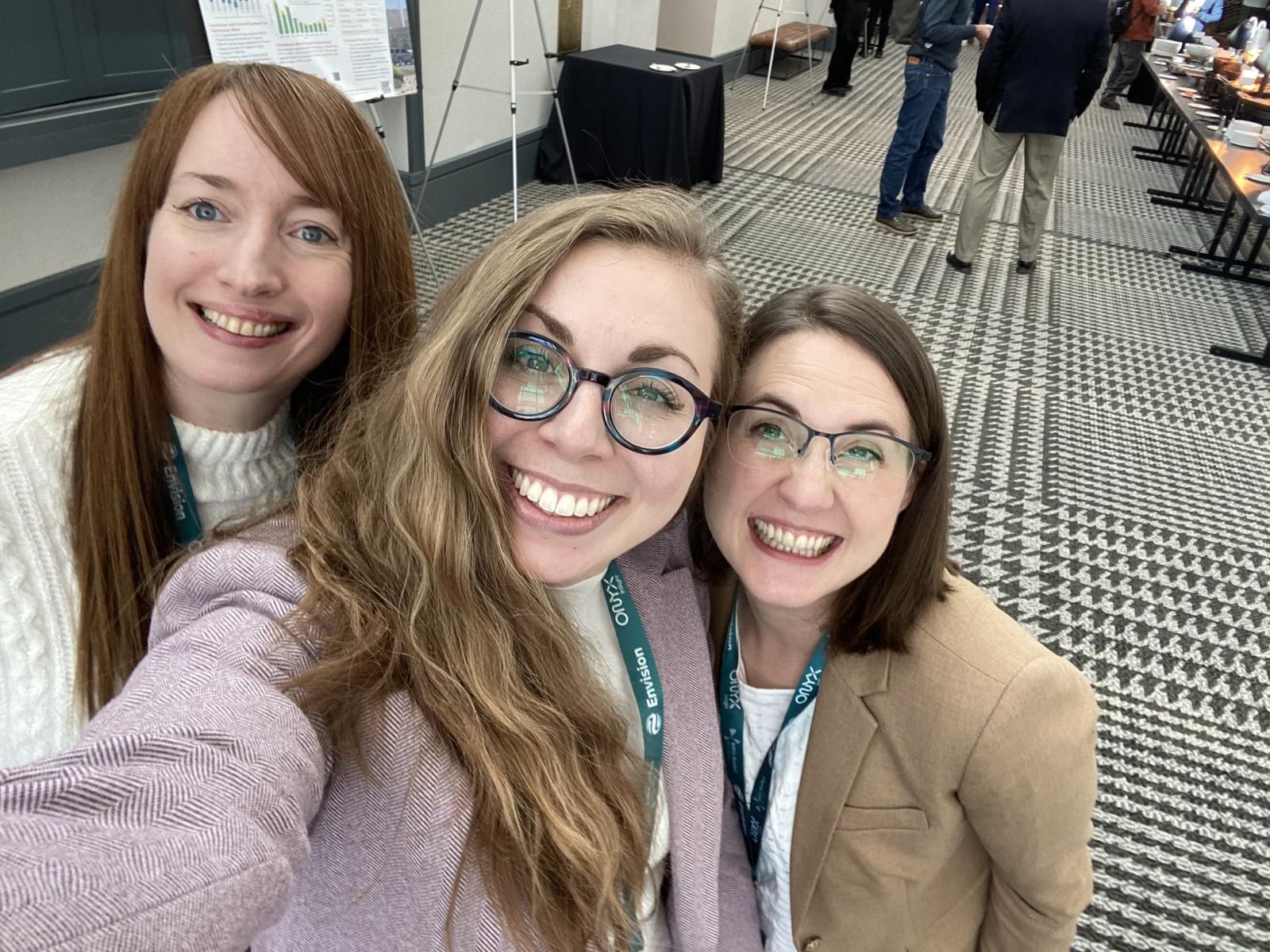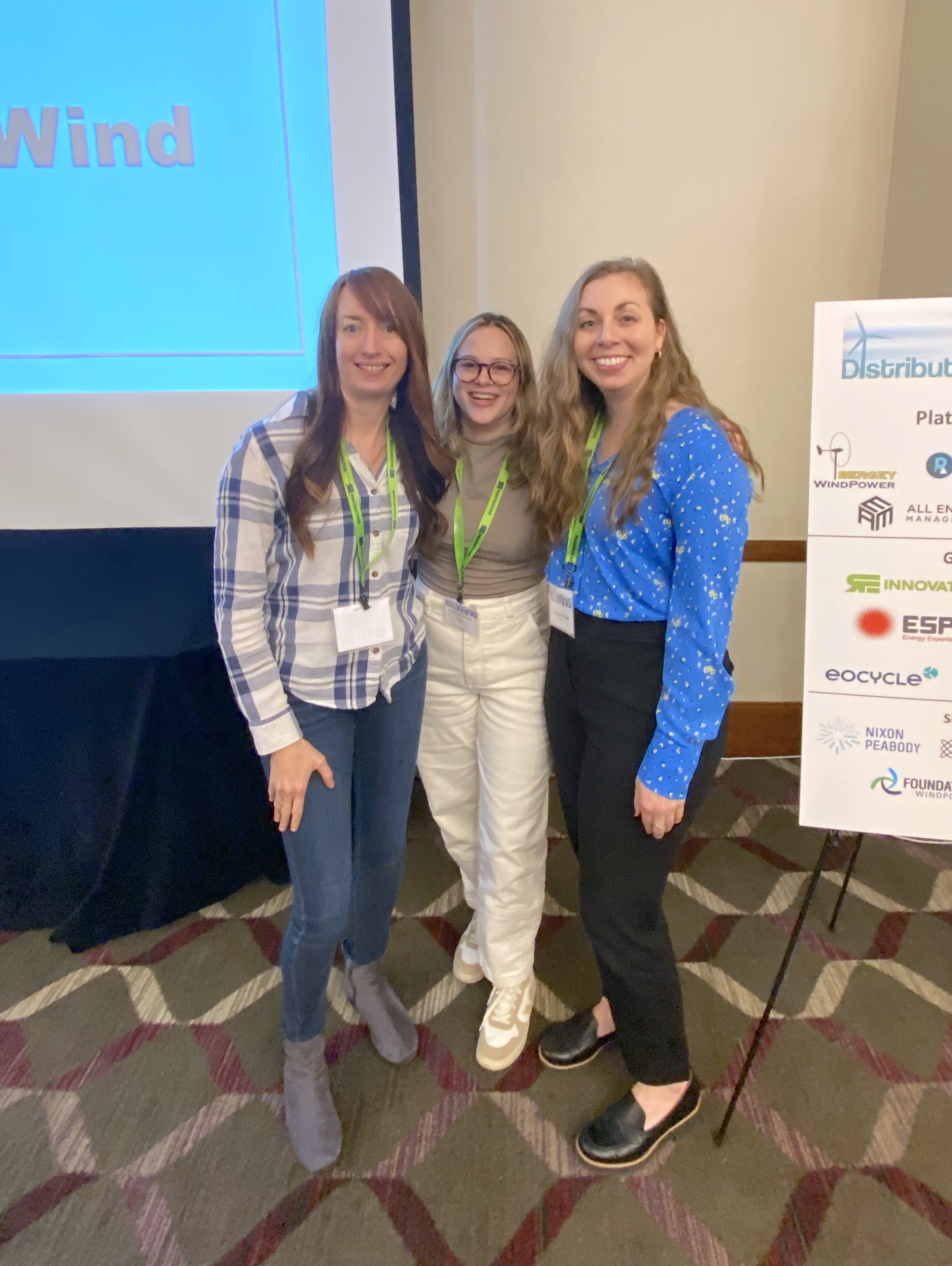PNNL Women of Distributed Wind Making History
Women-led team uses “beautiful mashup” of technical- and social-science skills to advance distributed wind

PNNL distributed wind experts (from left) Lindsay Sheridan, Danielle Preziuso, and Sarah Barrows at the North American Wind Energy Academy/WindTech 2023 Conference in Denver, Colorado.
(Photo by Danielle Preziuso | Pacific Northwest National Laboratory)
There are many ways that researchers at Pacific Northwest National Laboratory (PNNL) bring unique perspectives to the field of distributed wind—which focuses on smaller wind projects that generate energy for on-site or local use. One is the fact that PNNL’s distributed wind projects are all led by women.
"Strong women have always been at the helm of PNNL’s distributed wind portfolio,” said Danielle Preziuso, who serves as PNNL’s distributed wind capability lead. “This is no small feat given the continued gender disparities in the energy field.”
PNNL entered the distributed wind space in 2012, with the publication of its first annual Distributed Wind Market Report. The project was led by a longtime former PNNL researcher, Alice Orrell, who helped blaze a trail for distributed wind expertise at PNNL and mentored several current team members.
“I don’t think I would have had the same experience in this field without Alice and other women who led the way and made more space for women in distributed wind,” said Sarah Barrows, who leads PNNL’s On-Site Wind for Rural Loads project. She and other team members came from diverse educational and professional backgrounds before their paths converged at PNNL.
Preziuso, for example, is a socio-technical systems engineer, who earned her MS at the Iceland School of Energy, where she researched local wind resources for utility-scale development. Barrows is a research economist who began her career in the fields of food science and agricultural economics before jumping at the chance to study another complex system: the energy grid.

Another member of the team and current Distributed Wind Market Report lead, Lindsay Sheridan, is an Earth scientist with prior experience in the utility-scale wind energy industry. Kamila Kazimierczuk, who leads PNNL’s Equitable Wind Energy Workforce Outcomes project, is a systems engineer with a background in human-environment geography and environmental studies.
While none of these experts originally had their sights set on the field of distributed wind, each brings a critical, unique perspective that, when combined, gives PNNL a more holistic view of the industry’s challenges and how to solve them. Each of them was ultimately drawn to distributed wind by a shared passion for working with communities to meet their individual energy needs and goals.
“It’s rewarding to be able to translate your research into a practical application you can see in the real world,” Sheridan said. “Distributed wind isn’t one-size-fits all—you can scale and size it to different needs and create really tailored, optimized systems that directly benefit communities.”
The team also shares an excitement for helping to shape the future of interdisciplinary distributed wind energy research. “There are a lot of exciting opportunities on the horizon for distributed wind,” Kazimierczuk said. “Our work encourages vision-setting between researchers, communities, industry, and other parties to increase confidence in distributed wind technologies and facilitate decision-making. It’s a beautiful mashup of technical and social sciences.”
The team’s history in the field has created trusted relationships and partnerships that also help drive distributed wind projects forward. “We have such passionate industry collaborators who help root our research in reality,” Preziuso explained. “This increases the impact of our work by making sure it stands up to real-world conditions and is communicated in a way that lets people connect to the technology and its benefits.”
“Research in the past decade has enabled significant technological advances for distributed wind,” Preziuso added. “Now, the challenge is deploying proven technologies in meaningful ways. Distributed wind isn’t just about siting wind turbines where wind resources are strong to produce electricity—it’s about co-developing projects with communities and individuals in a way that works for them.”
Learn more about PNNL’s Distributed Wind capability.
Published: March 13, 2024